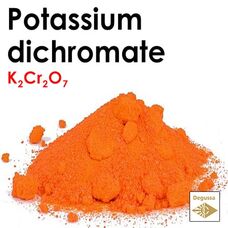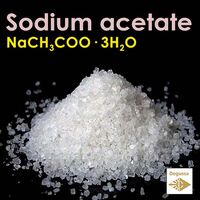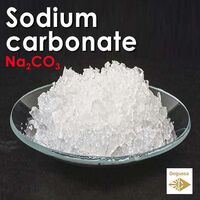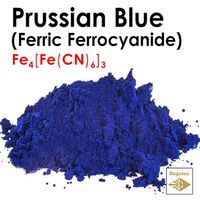What is Potassium Dichromate used for? Can Potassium Dichromate be used in pottery as pigment? How can I make tests for silver with Potassium Dichromate
K2Cr2O7
Potassium dichromate, K2Cr2O7, is a common inorganic chemical reagent, most commonly used as an oxidizing agent in various laboratory and industrial applications. As with all hexavalent chromium compounds, it is acutely and chronically harmful to health. It is a crystalline ionic solid with a very bright, red-orange color. The salt is popular in laboratories because it is not deliquescent, in contrast to the more industrially relevant salt sodium dichromate. Potassium dichromate (K2Cr2O7) is a chemical compound that contains potassium, chromium, and oxygen. It is a bright orange or red-orange crystalline solid and is commonly used in various applications. Here are some key properties and uses of potassium dichromate:
Chemical Properties:
The chemical formula for potassium dichromate is K2Cr2O7. It contains chromium in the +6 oxidation state (hexavalent chromium).
Uses:
Oxidizing Agent: Potassium dichromate is a powerful oxidizing agent. It can transfer oxygen to other substances during chemical reactions.
Laboratory Reagent: It is commonly used in laboratories as a reagent for various analytical and titration procedures.
In Photography: In the past, potassium dichromate was used in the production of photographic chemicals, particularly in the preparation of light-sensitive emulsions.
Wood Preservative: It has been used as a wood preservative due to its ability to deter decay and protect wood from insects. However, its use in this application has decreased due to environmental and health concerns.
Electroplating: Potassium dichromate is sometimes used in electroplating processes for the deposition of chromium onto metal surfaces.
Manufacturing of Matches: Manufacturing of Matches: In the production of safety matches, potassium dichromate can be used in the match head composition to facilitate ignition.
Silver test: When dissolved in an approximately 35% nitric acid solution it is called Schwerter's solution and is used to test for the presence of various metals, notably for determination of silver purity. Pure silver will turn the solution bright red, sterling silver will turn it dark red, low grade coin silver (0.800 fine) will turn brown (largely due to the presence of copper which turns the solution brown) and even green for 0.500 silver. Brass turns dark brown, copper turns brown, lead and tin both turn yellow while gold and palladium do not change.
Formula: K2Cr2O7
Molecular Weight: 294.185 g/mol
Form: red-orange crystalline solid
CAS Number: 7778-50-9
EC Number: 231-906-6
Density: 2.676 g/cm³
Synonyms: POTASSIUM DICHROMATE, Potassium bichromate, Kaliumdichromat, Iopezite, Potassium dichromate(VI), Dipotassium bichromate, Dipotassium dichromate, Bichromate of potash, Dipotassium dichromium heptaoxide, Caswell No. 690, Kalium bichromicum, EPA Pesticide Chemical Code 068302, dipotassium;oxido-(oxido(dioxo)chromio)oxy-dioxochromium, Kaliumdichromat [German], Kali bichromicum, Epitope ID:119680
Potassium Dichromate: Properties, Uses, and Safety Information
- Brand: Degussa
- Product Code: Oxide - Potassium dichromate - K2Cr2O7
- SKU: K2Cr2O7
- Availability: 565
-
3.99€
Available Options
Related Products
Sodium acetate - Hot ice (sodium acetate trihydrate)
NaCH3COO Sodium acetate trihydrate (NaCH3COO·3H2O) is a chemical compound composed of sodium (Na), acetate (CH3COO)..
0.99€
Zinc - Premium Zinc Powder: High-Quality Solutions for Industry and Health
Zn Zinc is a chemical element with the symbol Zn and atomic number 30. It is a bluish-white, moderately reactive me..
1.99€
Sodium Carbonate - Na2CO3 - Sodium Carbide Natrium Carbonate
Na2CO3 Sodium carbonate, also known as soda ash or washing soda, is a white, crystalline compound with the chemical..
0.99€
PRUSSIAN BLUE - Ferric ferrocyanide, Iron hexacyanoferrate - A Journey into Berlin Blue: History, Chemistry, and Applications
Fe4[Fe(CN)6]3 Prussian Blue is a deep blue pigment that has been used in various applications, including art,..
1.59€ 1.99€
Tags: oxides





